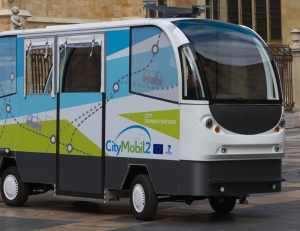Driverless cars could impact on global emissions strategies, according to report
by Colin Smith

Automated vehicles could become so popular that they impact on global efforts to curb transport-related emissions, warns a report.
Vehicles are mostly currently powered by burning fossils fuels in internal combustion engines, which makes a significant contribution towards global greenhouse gas emissions. Scientists have developed models to show that the long-term solution could be to make cars all-electric.
However, Dr Gregory Offer from Imperial College London says that current models do not factor in emissions of global greenhouse gases from automated vehicles with combustion engines. He predicts that there will be a shift in transport usage in society that could see a massive uptake of automated vehicles on the road. This could have a major impact on transport policy, infrastructure, society and global pollution levels.

Automated electric vehicles have the potential to change driving patterns
The projected surge in the use of automated vehicles could be turned into a major positive if they were all-electric, suggests Dr Offer. In the report, published in the journal Environment and Science, he outlines concepts such as car clubs and electrifying the roads that could also maximise the economic benefits of automated electric vehicles.
Dr Offer, an affiliate of the Energy Futures Lab and who is from the Department of Mechanical Engineering at Imperial, said: “Automated electric vehicles have the potential to change driving patterns because drivers won’t have to slavishly devote their time to controlling a vehicle. Cars could be reconfigured to be more comfortable, enabling passengers to face each other and interact more freely. They could also make travelling more social and productive, where cars become more like mobile living rooms or workspaces, potentially giving rise to new innovations. However, unless governments plan effectively, the potential positive impact of automated vehicles could turn into negative. We can’t afford to leave it to chance. This report outlines what could be done to make our driverless future a bright one.”
Automated driving has begun
The move towards driverless vehicles has already begun, with the emergence of advanced driver assistance technologies. However, Dr Offer says in the report that it is hard to tell when cars will become fully automated, with some industry predictions suggesting full automation will happen near 2020, while other more cautious predictions suggest the second half of this century.
The electric vehicle challenge
On average, drivers currently only travel up to 50 kilometres a day. Journeys of distances of around 160 kilometres represent only 12 per cent of all vehicle kilometres. Despite these facts, automotive manufacturers are compensating driver anxiety about the range of electric cars by creating heavy and costly battery packs, capable of providing energy over hundreds of kilometres, which is expensive, affecting the economics of electric cars.
Ownership
The car club model that has both driverless electric vehicles for short and medium distances and a small number of hybrid vehicles for long distances could help drivers overcome this range anxiety suggests Dr Offer. In the car club model, people could dispense with owning their own car and just hire and drop off a car when they need it. This could increase vehicle usage rates and reduce capital outlays for establishing the infrastructure and cost of purchasing a fleet. This model could significantly improve how the batteries are used, further improving the economics.
The report also suggests that using more automated electric vehicles will, on a cost per kilometre basis, improve the economics of electric vehicles, significantly more than the economics of combustion engine vehicles. This is because the running costs of electric vehicles will be cheaper and the more they are used the less important the capital cost becomes. Combustion engine vehicles will always be expensive to run, relative to electric cars, regardless of how much they are used.
Electric avenues
Another option for giving automated electric vehicles greater driving range, without increasing the size of batteries, would involve the use of a technology called roadbed inductive charging. This is a charging system that is buried beneath the road at places such as traffic light intersections. It wirelessly transmits an electric current through the air and into a car. This system allows for increased efficiency and range, which would also make driverless cars more economical to run.
Article text (excluding photos or graphics) © Imperial College London.
Photos and graphics subject to third party copyright used with permission or © Imperial College London.
Reporter
Colin Smith
Communications and Public Affairs